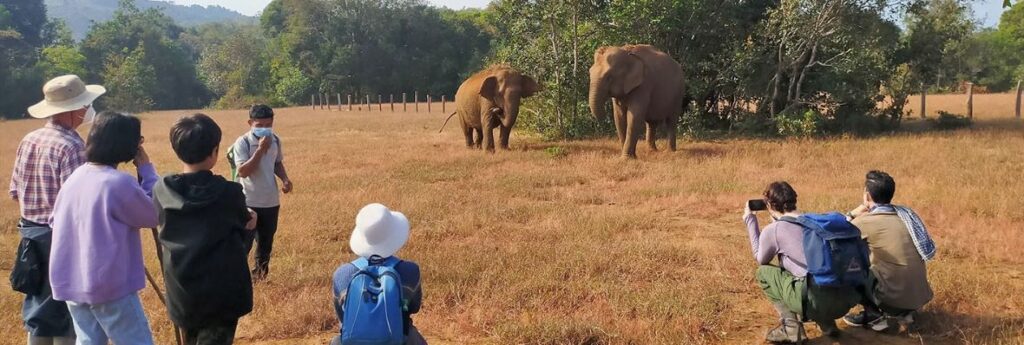With Canadians increasingly travelling as domestic and global pandemic restrictions ease, World Animal Protection (WAP) is urging travellers to say no to exploitative “animal tourism” and yes to supporting wildlife, whether it’s at home or abroad.
To that end, the organization (formerly known as The World Society for the Protection of Animals) is also encouraging Canadians to check out and implement its tips to identify and avoid harmful animal tourism activities before they travel.
“We know (some) businesses have a long history of problematic animal practices,” says Melissa Matlow, Campaign Director for World Animal Protection Canada. “We are working with the travel industry on moving away from inhumane and unsafe animal tourism and towards more sustainable animal-friendly experiences.”
Partners WAP has worked with so far to develop and implement animal welfare policies include G Adventures, Intrepid, The Travel Corporation (owns 40 brands including Trafalgar and Contiki), and World Expeditions.
Among the WAP tips on how to check if a venue is a true sanctuary and some best practices to be animal-friendly while travelling are:
• DON’T take selfies with wild animals. DO take lots of photos of wildlife from a respectful distance.
• DON’T ride an elephant. DO observe elephants at a sanctuary, on a webcam or in the wild.
• DON’T swim with dolphins. DO see dolphins in the wild with a responsible tour operator.
• DON’T watch wild animals perform tricks. DO see humans perform tricks in animal-free circuses.
• DON’T hold wild animals. DO watch them behaving naturally in the wild or in a sanctuary.
Five Freedoms
How do you know if an attraction or activity can harm an animal? World Animal Protection uses the Five Freedoms of Animal Welfare as our test to see if an animal’s basic needs are being met: Freedom from hunger and thirst; from discomfort; from pain, injury and disease; from fear and distress; and freedom to express normal behaviour.
“Sure,” says WAP, “a selfie with a dolphin could be considered a once-in-a-lifetime experience, but consider the impacts on those animals – a lifetime of suffering. Animals in these types of captive environments often present psychological signs of distress. They were never meant to live in small aquariums, isolated from others of their species.”
Domestic viewing
For those staying home, WAP has partnered with wildlife filmmaker and conservationist Julian Victor, for tips on how to spot wildlife safely and respectfully, even in busy cities:
• Parks and public gardens are great places to spot wildlife, but even bustling urban areas are full of animals. Don’t forget to look up! Buildings, street signs, trees and lamp posts are favourite hangouts for squirrels, hawks and even vultures and owls.
• Pick your time of day strategically. Most animals prefer cooler and quieter periods during the day. The best time to spot wildlife is early morning or late evening.
More tips and the latest news (such as how the Ukraine war is affecting wildlife) can be found on WAP’S web site.
World Animal Protection
World Animal Protection is an international non-profit animal welfare organization that has been in operation for over 30 years. The charity, which says it help give more 220 million animals better lives last year, describes its vision as: A world where animal welfare matters and animal cruelty has ended. Based in London, it has offices in China, Brazil, Kenya, and Canada (Toronto).

